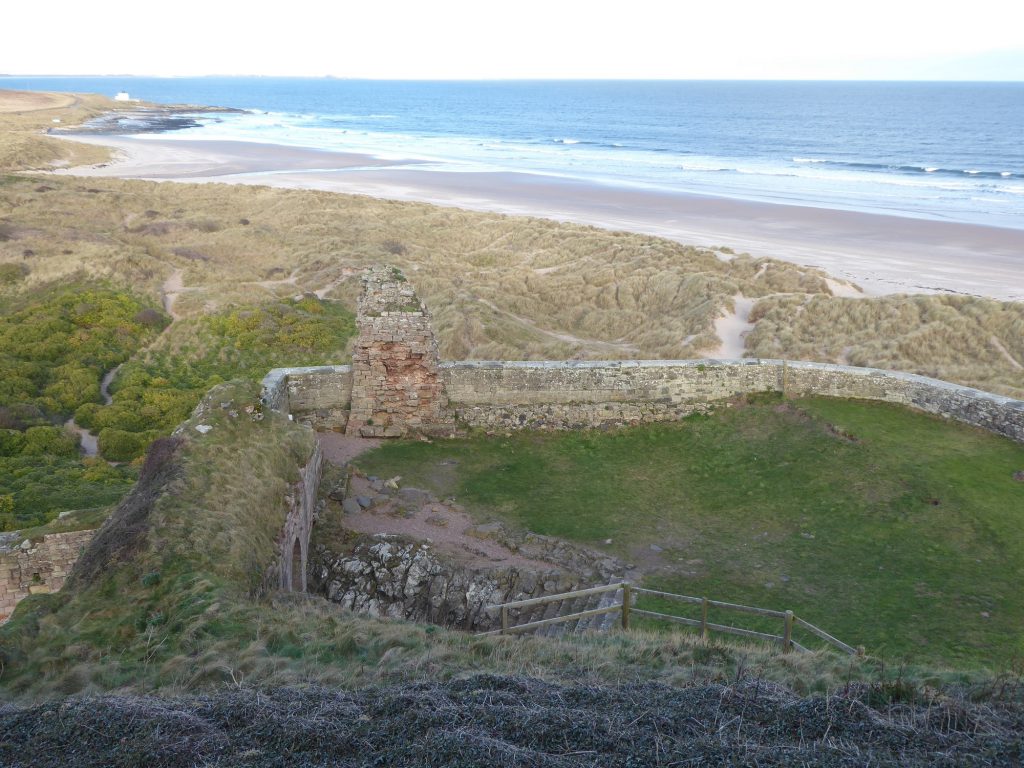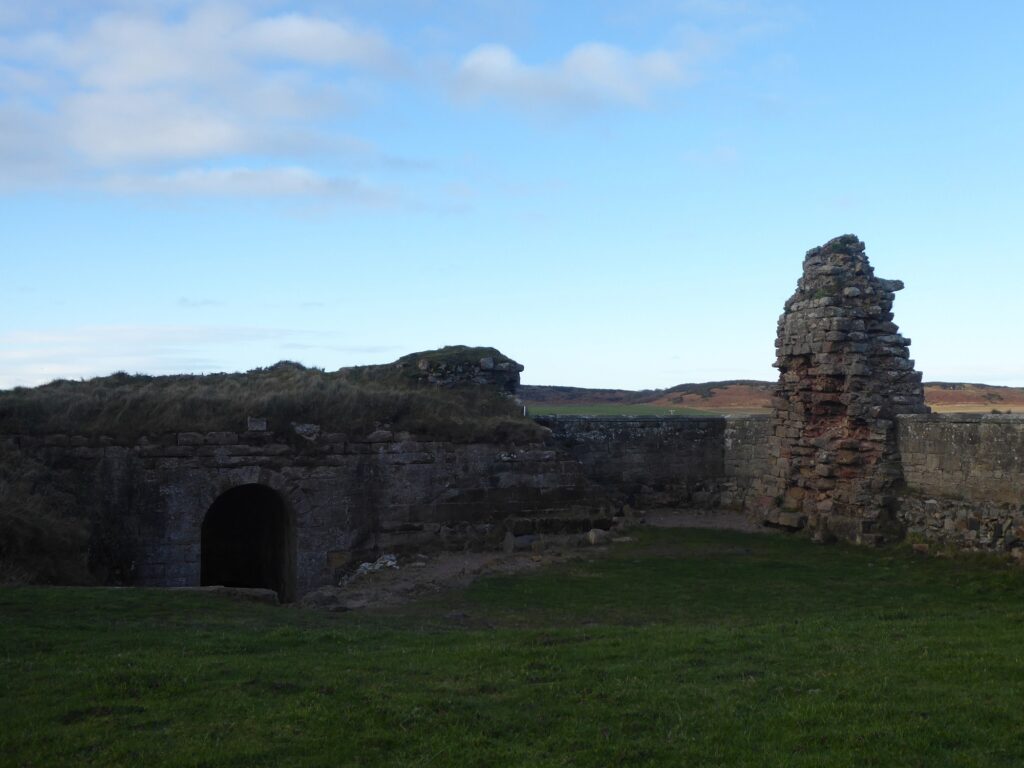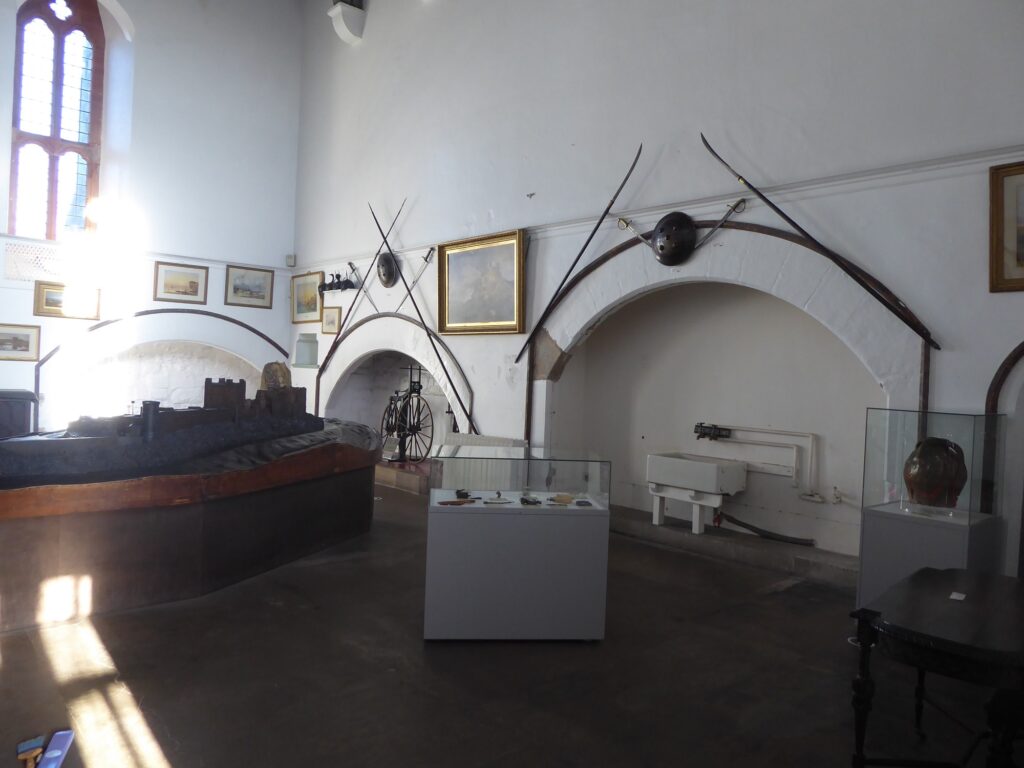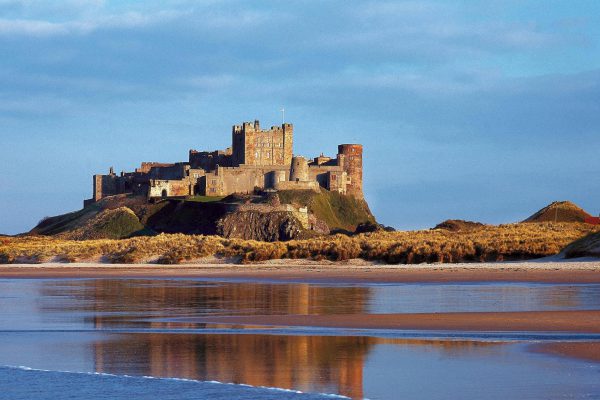The Ruins at Bamburgh Castle

The site of Bamburgh Castle has been occupied for thousands of years with buildings reflecting high quality structural work of their time. The priority of planning and layout was to defend outer then inner sections of the site, sometimes occupied by Kings and Queens.
Earliest buildings would have been made with coppiced wooden poles from local supplies and crafted with handmade tools. Later work was in stone, transported here by horse and mortar would include sand and shells from the beach. The Bamburgh Research Project have discovered evidence of various buildings, including in 2020 the Roundhouse which dates from the 4th or 5th century. The stone foundations of this are not currently visible but other early stonework remains in some areas, particularly towards the base of structures. The medieval stonework has been repaired or altered over centuries in response to attack, destruction or different use. One of the obvious ruins is the section of Norman wall at the northern end of the site where it slopes to a lower level. This is a substantial pillar and would have been part of a high outer wall to deter against attack and protect those within. The late 19th century low wall now in this area was built long after such defence was necessary.

St Oswald’s Gate is in the same area. This was the entrance to the castle site from the 7th century and there would have been early fencing. The Bamburgh Research Project found stone foundations of a possible gatehouse here.
Towards the Inner Ward the Clock Tower was built on the Medieval Belle Tower, still visible at the base. The Great Tower or Keep was built in the 12th century. From the thirteenth century on-going repairs were necessary to this and other structures. Northumberland Sheriffs ruled from Bamburgh and Corbridge and every year claimed expenses from the Exchequer for maintenance and building work.

Within the main castle there are areas of medieval stonework still in existence. Medieval fireplaces and doorways that led to storerooms and larders remain. The funnelled windows carried away steam from hot, heavy work, creating huge banquets for the King’s Hall. Above was the medieval Muniment Tower, which stored valuable documents. The King’s Hall retains the Medieval floor plan.
Interspersed with repairs and development there was onslaught from battle, a factor in the deterioration of the buildings. Fierce coastal weather affects the stonework, mortar and later window openings, requiring frequent intervention.
In the late Medieval period the Wars of the Roses found Yorkists and Lancastrians vying for the throne of England. Lancastrians remained loyal to King Henry VI and Queen Margaret who took refuge at Bamburgh in 1464 with the Constable, Sir Ralph Grey. Yorkists fought for King Edward IV whose large army amassed with new cannons breaching the castle walls. It was said that stones of the walls flew into the sea. This ended the fortress role of Bamburgh.
Written by Bamburgh’s Curator, Lisa Waters

Bamburgh Castle
Bamburgh, Northumberland, NE69 7DF


